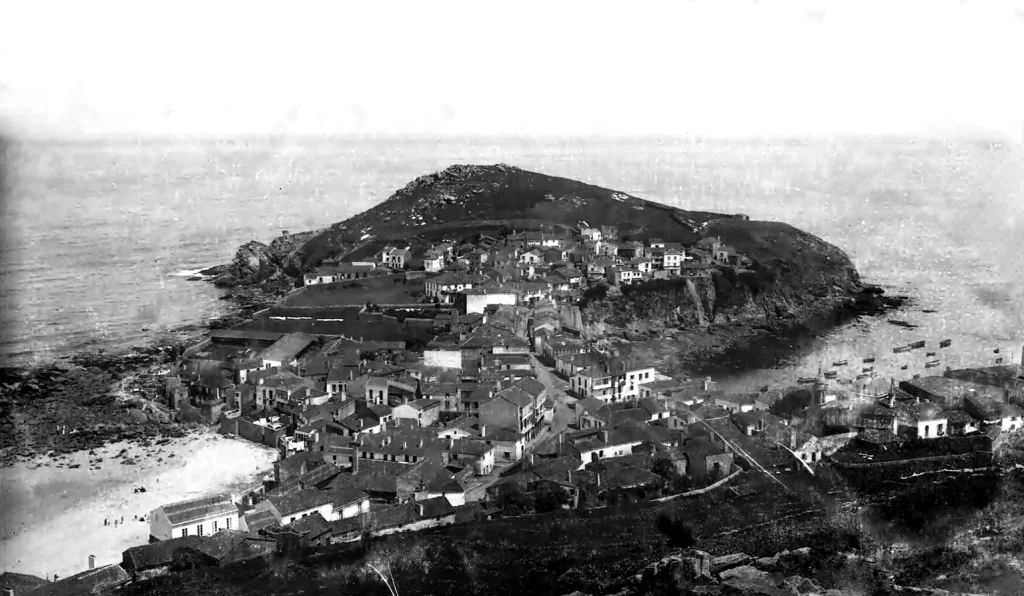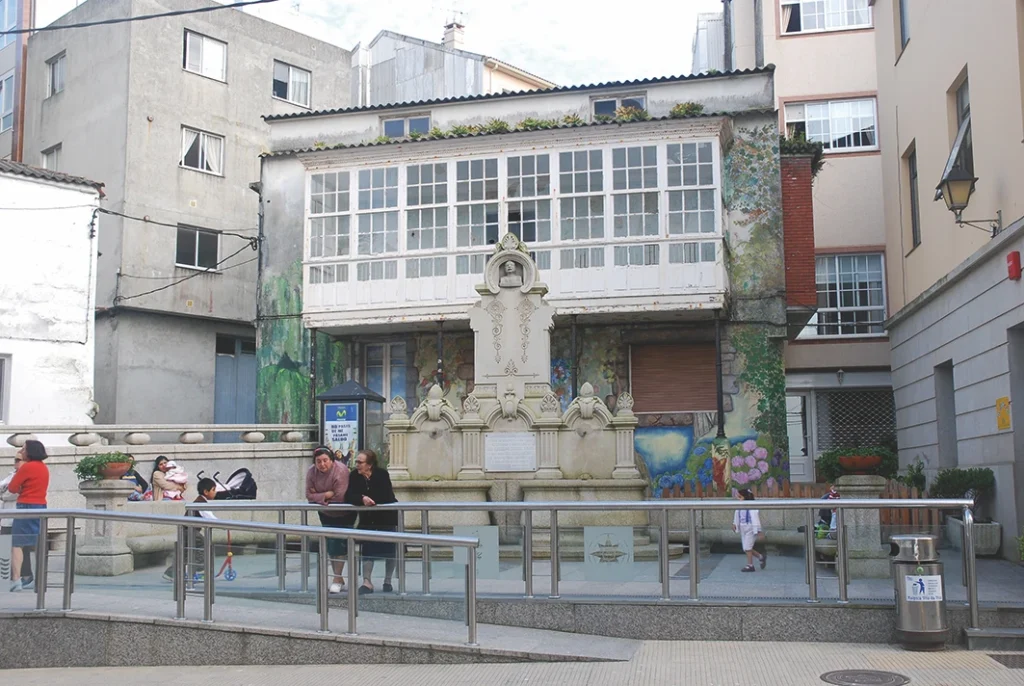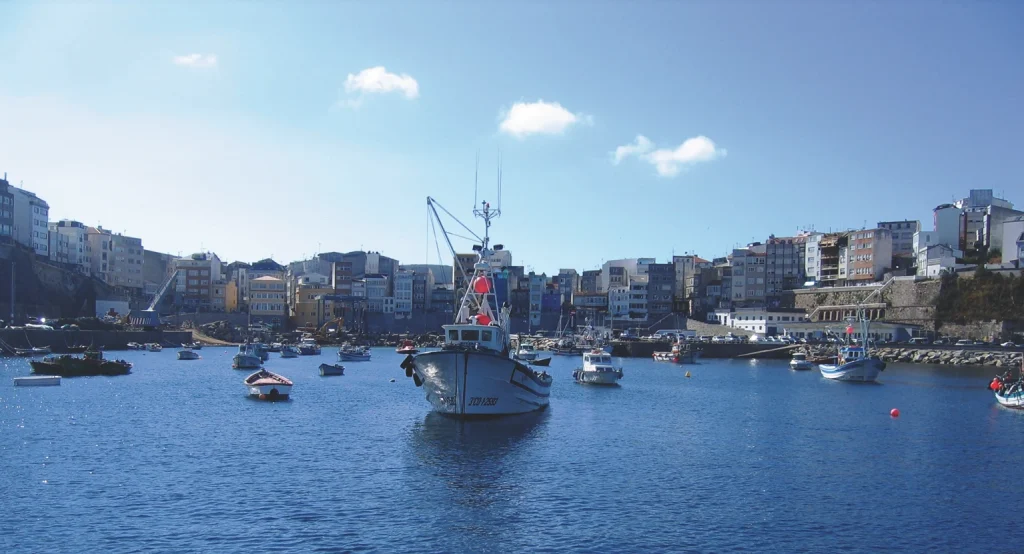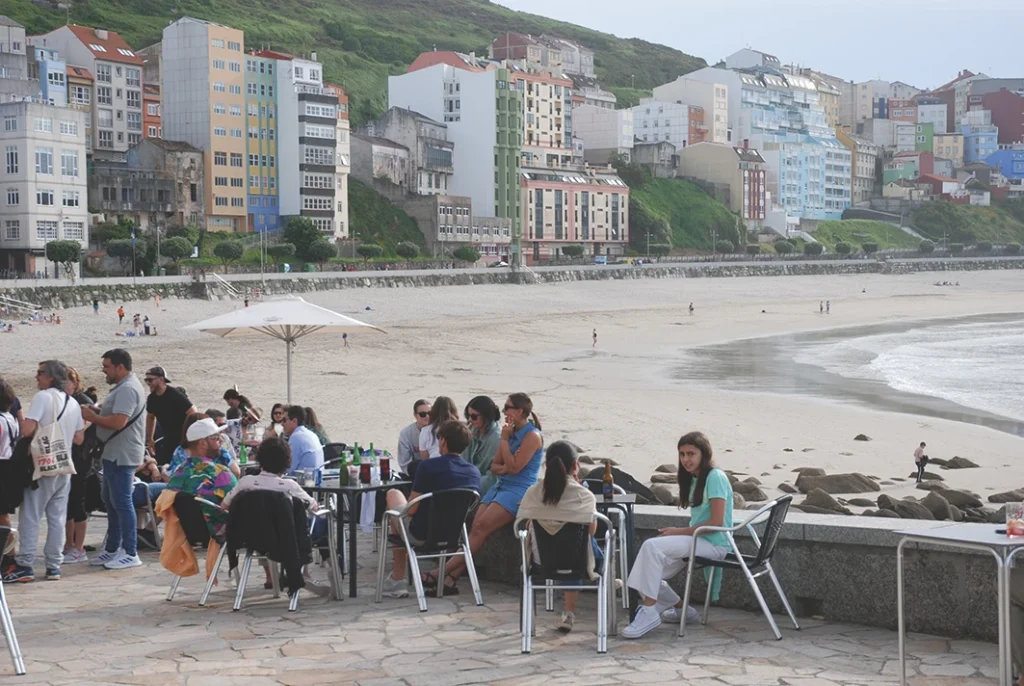
History
The town of Malpica grew under the shadow of Monte A Atalaia as a small fishing and whaling port, just like Caión and Camelle. Basques and Asturians came to this stretch of coast in winter to hunt for whales that they used to make oil. Juan Molina mentions this type of fishing in the 16th c.: “Much can be taken from this creature, even when small, because up to twenty five litres of oil can be extracted, and may be used in much the same way as the fruit of the olive tree, except when cooking”.
Cardinal Del Hoyo offers more details about whaling in the early 17th century: “This town is the port where most whales are caught anywhere in Galicia. Every year seven or eight whales are caught, two of which are leased to the Basques, who are the ones who catch them; they pay seven thousand maravedís (an old Spanish coinage) to the archbishop in fixed rent every year”.
Whaling decreased in importance from the 18th c. onwards and was replaced by sardine and conger fishing. José Lucas Labrada comments that this port had a dangerous entrance and fishermen brought in catches of about two million sardines, 250 hundredweight of conger eel and three thousand hundredweight of hake every year, along with one thousand six hundred kilos of onions that were exported.
Like Caión, Malpica was not an easy port to enter especially in rough seas. Such conditions made Malpica a port that was used solely for fishing. José Cornide mentions this in the 18th c.:
“Before coming to this headland [A Atalaia] one finds the port of Malpica, which stands on rock with only four fathoms of water; making it suitable for entry solely by fishing vessels, of which there are many”.
Local sailors always had to face the rough seas that beat against A Plancha and broke on the beach that was used for docking. That is why the boats had to be moved up a ramp in winter to the main street. The Andalusian writer José Mas, author of the novel La Costa de la Muerte (1928), which is set in the town, mentions this situation: “And the boats were there, all lined up in a seafaring street shaped like a ramp that slid gently down until it disappeared into the bay”. This event can also be seen in photographs of the period.
The locals’ greatest ambition was to have some kind of protection for their fishing fleet. The first works on the port were the seawall and the ramp, financed by a local benefactor called Anselmo Villar Amigo (1850-1918), who had made his fortune in Argentina. The first works to protect the port commenced during the 2nd Republic, and were interrupted by the Spanish Civil War. They would not recommence until the 1950s when the dyke was extended and the docks were built. The dyke was further extended and work to improve the port infrastructure took place in the seventies and eighties.

Malpica had about one thousand inhabitants in the 1920s and town had spread out to the south of the Monte da Atalaia and the isthmus that connects the small peninsula to the region. There was a mixed school, a police station, two leisure associations, several stores and a carriage service. Electricity did not arrive here until 1928.
Malpica back then was an attractive little town of narrow winding streets and small houses of one or two storeys, with stone walls and tiled roofs, some of which had balconies or galleries.
The 1960s brought about many changes, and the face of old Malpica was radically transformed by urban development that did away with the harmony of the past. Despite so many changes made with no respect for traditional architecture, the atmosphere of a fishing port, its unique setting and the bright painted fishing boats make it an attractive place for tourists.
Route on foot around the town

Start at the port, which is the best place to park your vehicle. Activity at the port varies depending on when you arrive there. Take a walk along the quay and see what might be happening there; if you’re lucky, there may be auctions at the fishing auction hall, and if so, then walk in and see the different types of fish on sale and enjoy the atmosphere inside and outside the hall. After walking along the quay, go up to the Praza do Cruceiro and once there go along the Rúa Tío Paz to the viewing point, where there are some wonderful views of the entire port. Just below you, it is the quay for the smaller vessels; and further away is the new district of O Camiño do Río that rises up to the chapel of As Neves or Santo Antón. You’ll also be able to make out the port entrance where the larger vessels are moored and the rugged coast. Head back to the Praza do Cruceiro and continue along the Rúa Eduardo Vila Fano, named after the engineer who designed the project for the first seawall at the port. Then carry on to the Praza de Anselmo Villar, which is the town centre. Here you can see the Fonte de Abaixo fountain, donated by Anselmo Villar, a local philanthropist, and inaugurated in 1897. His bust was added in
1957. From here go down the Rúa Praia to the large beach of Area Maior, full of tourists in summer. Here you can walk along the promenade that borders the beach and see the fantastic views of the cape of Santo Adrián and the Sisargas Islands.

Go back to the Praza de Anselmo Villar once again and this time go to the Casa do Pescador, built in 1956 on the ramp that went down to the port. Inside there are several works of art by a painter from A Coruña, Urbano Lugrís González (1908? -1973), who was commissioned to decorate the building. The bar on the ground floor has a wind rose which is a copy of the one painted by Lugrís for one of his murals. The Fogar do Pensionista (1st floor) and the 2nd floor have several works by Lugris: two triptychs with images of saints, the Wind Rose, “Balea”, “Profundidade Mariña” and “as illas Sisargas desde Malpica”.
From A Casa do Pescador head back to the port, but this time go along the south side. A little further on you’ll see the sculpture of a whale’s tail, a work by the artist Miguel Couto and inspired by “Balea” by Lugrís. Walk along the quay and return to where the route started.